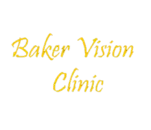Vision Therapy is a type of Physical Therapy. Like other forms of physical therapy, with vision therapy, optimum results require much more than visual acuity or binocular eye muscle control. Vision therapy integrates visual acuity and binocular function plus detailed brain function activities that collectively control thousands of components of our entire body's coordinated actions. Your visual system is your steering system. Vision Therapy helps to enhance the ability of the visual system to more precisely orchestrate the entire body's activities.
We provide complete diagnostic and therapeutic care for children and adults with these type of vision problems:
Eye tracking
Eye teaming (Strabismus)
Eye focusing (Amblyopia)
Learning-related vision problems
Visual Information Processing
Computer related vision problems
Sports vision enhancement
Brain injury related vision problems
What is Vision Therapy?
Vision therapy is a sequence of therapy procedures that are individually prescribed and monitored by the doctor to develop efficient visual skills and visual processing. Vision therapy is
prescribed following a comprehensive evaluation of the visual system.
Binocular & Visualization Tests
The vision therapy program is based on the results of standardized tests, the patient’s specific signs and symptoms plus a careful look at the needs of the patient.
The use of lenses, prisms, filters, occluders, specialized instruments and computer programs is an integral part of vision therapy. Typically, vision therapy is administered as a combination of in-office visits combined with prescribed, daily, home-vision therapy procedures.
The in-office therapy is designed to make the patient aware of his or her visual deficiencies under controlled conditions. Then by a feedback process the patient is taught strategies to improve visual performance.
Home therapy is directed at practicing the newly learned visual skills until the initial conscious effort becomes automatic.
Visit The American Optometric Association Website for the Optometry position paper on vision therapy.
